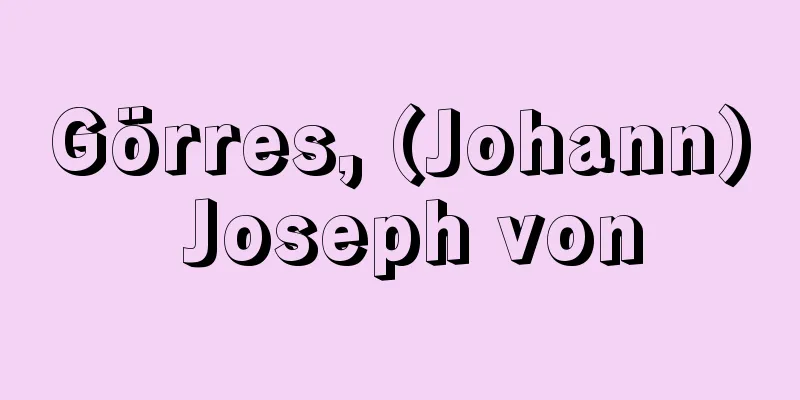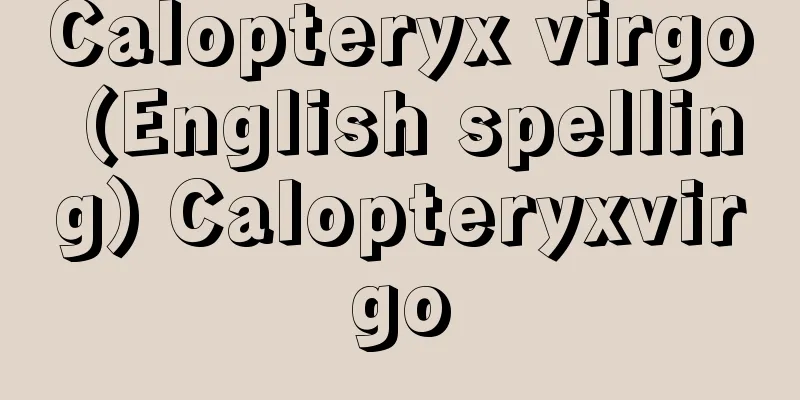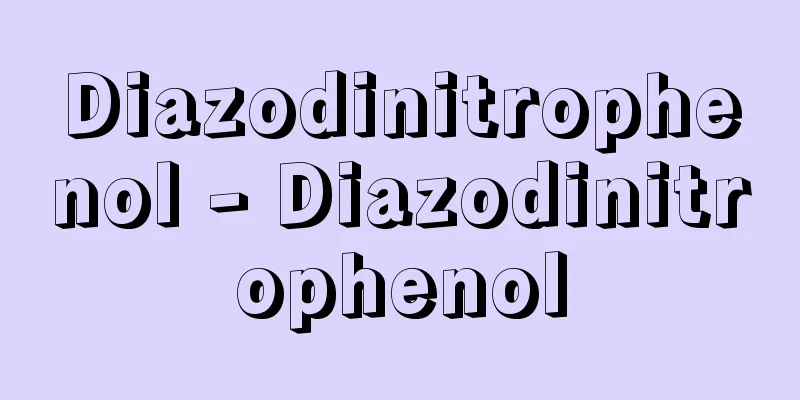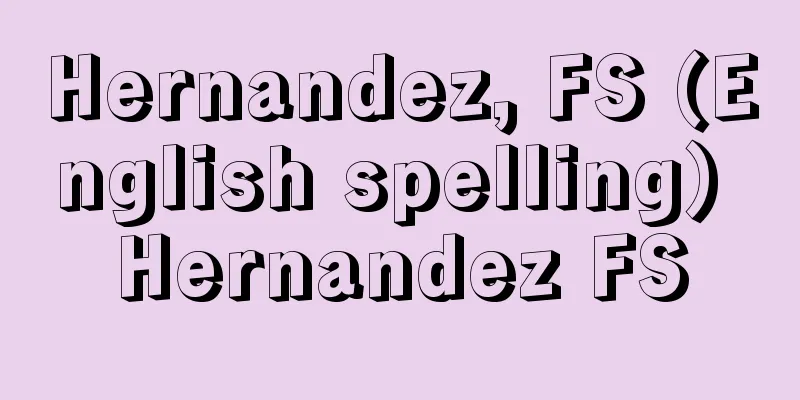Fourth Republic (English spelling)
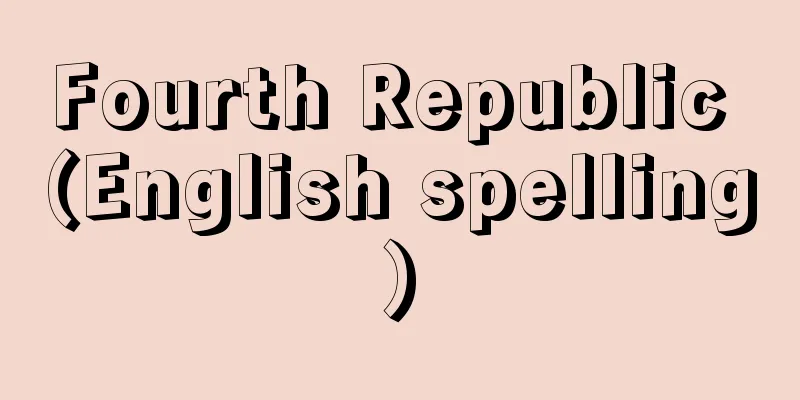
|
France's political system (September 1944-June 1958). When the Free French Army liberated Paris from the German occupying forces in late August 1944, toward the end of World War II, the Pétain government in Vichy was defeated, and the anti-German resistance movement (Resistance) established a provisional government under its leader, General de Gaulle, in early September and awaited the people's judgment on the future political system. The Constituent Assembly elected in October 1945 made the Communist Party the leading party, and drafted a constitution under its influence, but it was rejected in a national referendum. A Constituent Assembly was then elected with the People's Republican Party as the leading party, and the proposed constitution was approved in a national referendum in October 1946, officially establishing the Fourth Republic in constitutional history (its political history began in September 1944, when the Provisional Government of de Gaulle was established). However, the new system had a narrow base, with 31% abstentions and only 37% of voters voting in favor. The constitutional and political character of this political system, apart from the names of the two houses of parliament, is not very different from that of the interwar Third Republic. It is a parliamentary system in which a prime minister heads and controls a cabinet, but the National Assembly (lower house), representing the sovereign, takes precedence over the cabinet, which is constantly subject to an uncertain parliamentary majority. Eventually, the separate parties and veteran parliamentary politicians of the pre-World War II era returned, reviving not only the pre-war framework but also its conventions, procedures and politics. The constitutional reform of December 1954, aimed at strengthening the cabinet, but did not improve the situation much. National Assembly members were elected in 1946, 1951 and 1956, but their majority gradually shifted its centre of gravity to the right. Until May 1947, the three left-wing parties that emerged from the anti-German resistance movement, the Communist Party, the Socialist Party, and the People's Republican Party, held an overwhelming majority, but after that, the so-called "third force" became the majority, excluding the Communist Party and adding the Radical Party and the Conservatives (1947-52, 1956-58). The establishment had to defend the parliamentary system against the threat of the Communist Party on the left, and the offensive of the French Popular Union and later the Poujade faction on the right, and on top of that, the majority itself was in danger of splitting over issues such as private school subsidies, liberal economic policies, and colonial issues. To maintain its majority, it had to stick to a strategy of freezing the status quo, close to the status quo, and put off important choices. This is the so-called immobilisme, which has earned it a bad reputation. If the third force could not be united, the majority would shift even further to the right. Generally speaking, because the coalition majority on which they relied was unstable and inconsistent, cabinets were weak and short-lived, lacking vitality and consistency in the selection and implementation of basic policies. In the 11 and a half years from December 1946 to June 1958, 22 cabinets were replaced, with the average duration of each cabinet being just 6.2 months. After 1956, the cabinet's crisis deepened over the Algerian problem. For various reasons, the government chose the path of armed suppression rather than diplomatic negotiations, plunging the regime into a costly and long-lasting colonial war. The Indochina War, which began at the end of 1946, was finally resolved after the defeat at Dien Bien Phu in May 1954, thanks to the insight and decisiveness of the Radical French Prime Minister Mendes. He sought a negotiated solution to the North African problem, but the segregated parliament could not tolerate this charismatic leader, and after seven and a half months he was voted no-confidence and forced to resign in a furious frenzy. The Algerian revolt that began during his term of office forced the Socialist Prime Minister Moret to send in the largest overseas army in French history (500,000 men). In mid-May 1958, the Algerian garrison and colonists, frustrated by the inconsistency of the home government's policies, resorted to a coup d'état, forcing the Paris government into a corner. The parliamentary leaders abandoned the defense of the regime and handed power over to General de Gaulle. The people also placed their hopes in him rather than in the parliamentary leaders. The vote of confidence in Prime Minister de Gaulle on June 1 (329 votes to 224) was the de facto end of the regime. The Fourth Republic certainly had some achievements that should be remembered. It rebuilt the postwar economy, modernized it, and achieved the largest economic growth since the Second Empire. It also prepared the foundations for the European Community and ensured the security of France. Nevertheless, it was essentially a restoration of the prewar system, and its weak government failed to secure the trust and expectations of the majority of its citizens. [Yokota Chihiro] "Modern French History I & II" by A. Worth, translated by Noguchi Nakata and Kosaka Masataka (1958, 1959, Misuzu Shobo)" ▽ "French Political History Volume 2" by Nakagi Yasuo (1975, Miraisha)" ▽ "Modern French History" by Kono Kenji (1977, Yamakawa Publishing)" ▽ " Modern French Political History" by Watanabe Kazuyuki, Minami Mitsuhiko and Morimoto Tetsuro (1997, Nakanishiya Publishing)" ▽ "Postwar French Political Experiments: The Fourth Republic and 'Organized Parties' 1944-1952" by Nakayama Yohei (2002, University of Tokyo Press)" ▽ "Modern French History: Government and the People after the Popular Front Period, 1936-1996" by Maurice Larkin, supervised translation by Mukai Yoshinori, translated by Iwamura Hitoshi, Ota Kiyoshi et al. (2004, Osaka University of Economics and Law Press)" ▽ "Modern French History" by Satoshi Uchiyama (Iwanami Shinsho)" ▽ "Modern French History - From the Age of Heroes to the Coexistence of Conservatives and Progressives" by Hirotaka Watanabe (Chuko Shinsho)" ▽ "P. Courtier La Quatrième République (Paris, PUF, Coll.《QSJ》, 3rd ed., 1983)" [References] | | | | | | |Source: Shogakukan Encyclopedia Nipponica About Encyclopedia Nipponica Information | Legend |
|
フランスの政治体制(1944.9~58.6)。第二次世界大戦末期の1944年8月下旬、自由フランス軍がパリをドイツ占領軍から解放したとき、ビシーにおけるペタン政権は壊走し、対独抵抗運動(レジスタンス)派はそのリーダーであるドゴール将軍の下に9月初旬臨時政府を樹立し、将来の政治体制について国民の審判を待った。45年10月に選出された憲法制定議会は共産党を第一党とし、その影響下に憲法案を作成したが、国民投票で退けられた。ついで人民共和党を第一党とする憲法制定議会が選出され、憲法案が46年10月の国民投票で承認され、第四共和政が憲法史上正式に成立した(政治史的な成立は、ドゴール臨時政府が樹立した44年9月)。しかし棄権は31%に達し、賛成票は有権者の37%にとどまったから、新体制の基盤は狭いものであった。 この政治体制の憲法的、政治的性格は、議会の両院の名称は別として、戦間期の第三共和政のそれとあまり違わない。首相が内閣を率いて支配する議会制であるが、主権者を代表する国民議会(下院)が内閣に優越し、内閣は絶えず不確かな議会多数派に左右される。やがて第二次世界大戦前の分立的な政党や老練な議会政治家が復帰し、戦前の枠組みばかりでなく、その慣例や手続や駆け引きまで復活してゆく。1954年12月の憲法改正は、内閣の強化をねらったものであったが、事態をさして改善しなかった。国民議会は46年、51年、56年に選出されたが、その多数派は重心をしだいに右寄りへ移す。47年5月までは、対独抵抗運動から現れた共産党、社会党、人民共和党の左翼三党が圧倒的多数派をなしたが、その後は共産党を排除して、急進党や保守派を加えた、いわゆる「第三勢力」が多数派となった(1947~52、1956~58)。体制派は、左の共産党の脅威、右のフランス人民連合の、のちにはプジャード派の攻勢に対して議会制を守らねばならず、そのうえ、多数派自身、私立学校補助金問題、自由主義経済政策、植民地問題などで割れるおそれがあった。多数派を維持するには、現状保守に近い現状凍結戦略を守り、緊要な選択も先送りせざるをえない。これが、悪評を招いたいわゆるイモビリスムimmobilismeである。第三勢力の結集が得られなければ、多数派はさらに右寄りとなる。総じて、その依拠する連合多数派が不安定で一貫性を欠いたので、内閣は弱体で短命となり、基本的政策の選択にも遂行にも活力や一貫性を欠かざるをえなかった。46年12月から58年6月までの約11年半の間に22の内閣が交替し、その平均存続期間は6.2か月の短さであった。 1956年以降、内閣の危機はアルジェリア問題でいっそう深まった。種々の理由から、外交交渉によらずに武力鎮圧の道を選んだ政府は、体制を、代価の高い、長年にわたる植民地戦争に投げ込んだ。1946年末に始まったインドシナ戦争は、54年5月ディエン・ビエン・フーでの敗北ののち、ようやく急進党のマンデス・フランス首相の洞察と果断によって解決された。彼は北アフリカ問題の交渉による解決を目ざしたが、分立的な議会はこのカリスマ的リーダーを許さず、7か月半で不信任して、怒号のうちに退陣させた。彼の在任中に始まるアルジェリアの反乱は、社会党のモレ首相にフランス史上最大規模の海外派遣軍(50万人)を投入させた。58年5月中旬、本国政府の政策の不徹底に業(ごう)を煮やしたアルジェリア駐留軍と植民者は、クーデターに訴え、パリ政府を追い詰めた。議会のリーダーたちは、体制の防衛を放棄し、ドゴール将軍に権力をゆだねた。国民も議会指導者より彼に期待した。6月1日のドゴール首相信任投票(329票対224票)は、体制の事実上の終幕であった。 第四共和政は、確かに記憶されるべき成果をもっている。戦後経済を復興し、その近代化を図り、第二帝政以来といわれる経済成長を実現した。ヨーロッパ共同体の基礎を準備し、フランスの安全も確保しえた。にもかかわらず、それは基本的に戦前の体制の復活であり、その弱い政府は市民多数の信頼と期待を確保しえなかったのである。 [横田地弘] 『A・ワース著、野口名高・高坂正堯訳『フランス現代史Ⅰ・Ⅱ』(1958、59・みすず書房)』▽『中木康夫著『フランス政治史 中』(1975・未来社)』▽『河野健二著『フランス現代史』(1977・山川出版社)』▽『渡辺和行・南充彦・森本哲郎著『現代フランス政治史』(1997・ナカニシヤ出版)』▽『中山洋平著『戦後フランス政治の実験――第四共和制と「組織政党」1944~1952年』(2002・東京大学出版会)』▽『モーリス・ラーキン著、向井喜典監訳、岩村等・太田潔他訳『フランス現代史――人民戦線期以後の政府と民衆 1936~1996年』(2004・大阪経済法科大学出版部)』▽『内山敏著『フランス現代史』(岩波新書)』▽『渡辺啓貴著『フランス現代史――英雄の時代から保革共存へ』(中公新書)』▽『P. CourtierLa Quatrième République (Paris, P.U.F., Coll.《Q.S.J.》, 3e éd., 1983)』 [参照項目] | | | | | | |出典 小学館 日本大百科全書(ニッポニカ)日本大百科全書(ニッポニカ)について 情報 | 凡例 |
Recommend
Kanshinji Temple Golden Hall
...The main hall of Kakurin-ji Temple in Hyogo (a...
Dynamite - dynamite
A general term for explosives containing nitrogly...
Coastal cool desert
...Arid regions can also be found in high latitud...
Yahgan (English spelling)
They were hunter-gatherers who lived on Tierra del...
1 yen silver coin
…A 1 yen silver coin minted in the early Meiji pe...
"Kamakura Udaijin Kashu" - Kamakura Udaijin Kashu
…Completed in 1213 (Kenryaku 3). Also known as th...
Oil palm - Elaeis guineensis; oil palm
A tall palm tree native to West Africa. It is wide...
public park
… [History of the park] Ancient Greek and Roman c...
Laniidae
…A general term for birds of the passerine order,...
Ant's egg moss (English spelling) antseggmoss
...Ikubigoke means "boar's-necked moss&q...
Kirigusoku - Cutting equipment
〘Noun〙 refers to tools used for striking and slash...
Wooden mortar and pestle
…It is called a tousu (earthen mortar) because it...
Quilt - Quilt
〘 noun 〙 A futon that is placed over the body when...
Higashisefuri [village] - Higashisefuri
A village in Kanzaki County, northeastern Saga Pre...
Fukuhara
The name of a place in Settsu Province. Currently...


